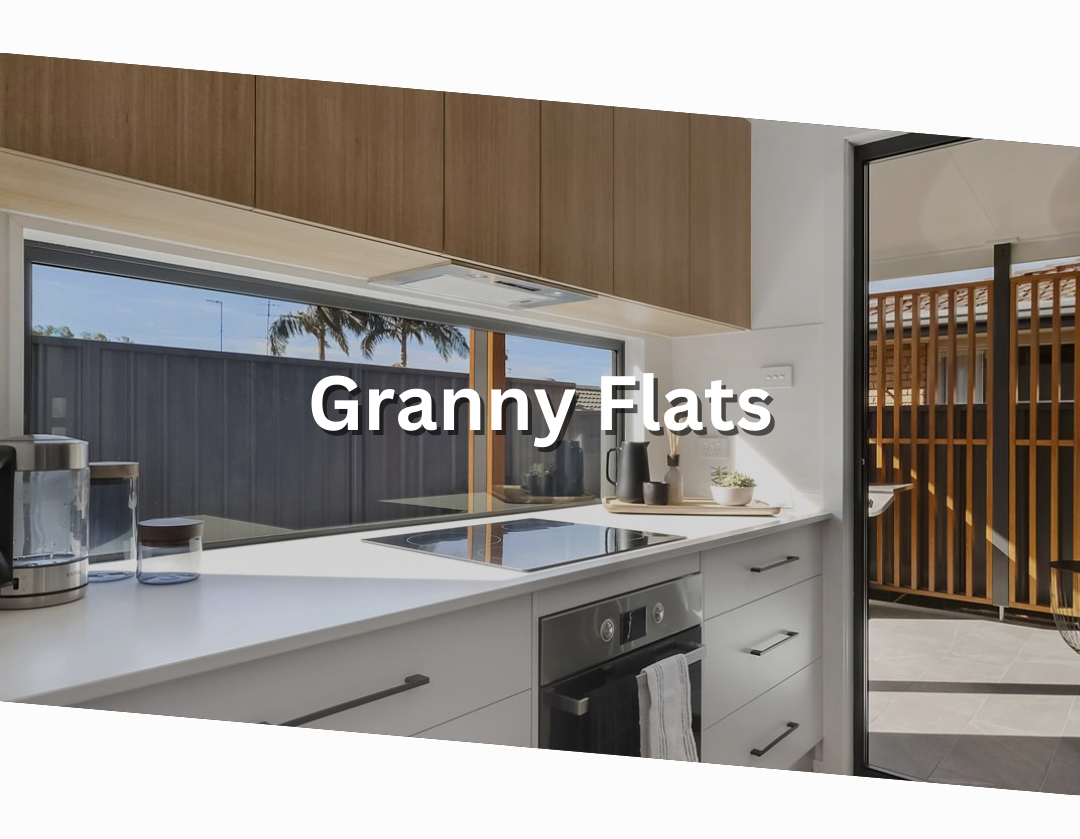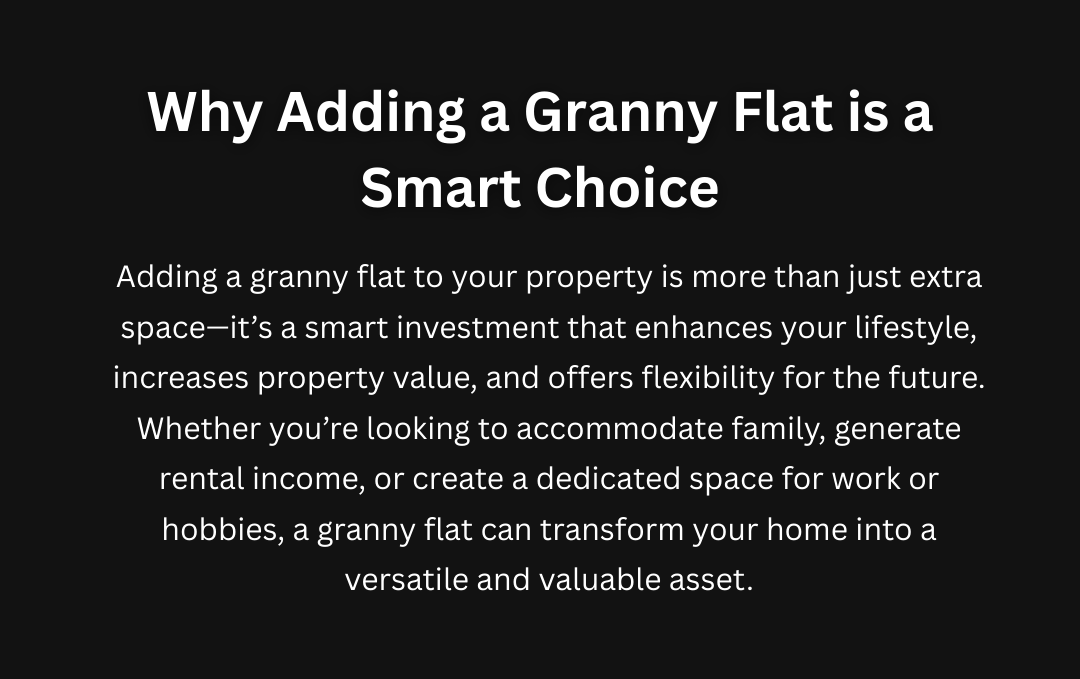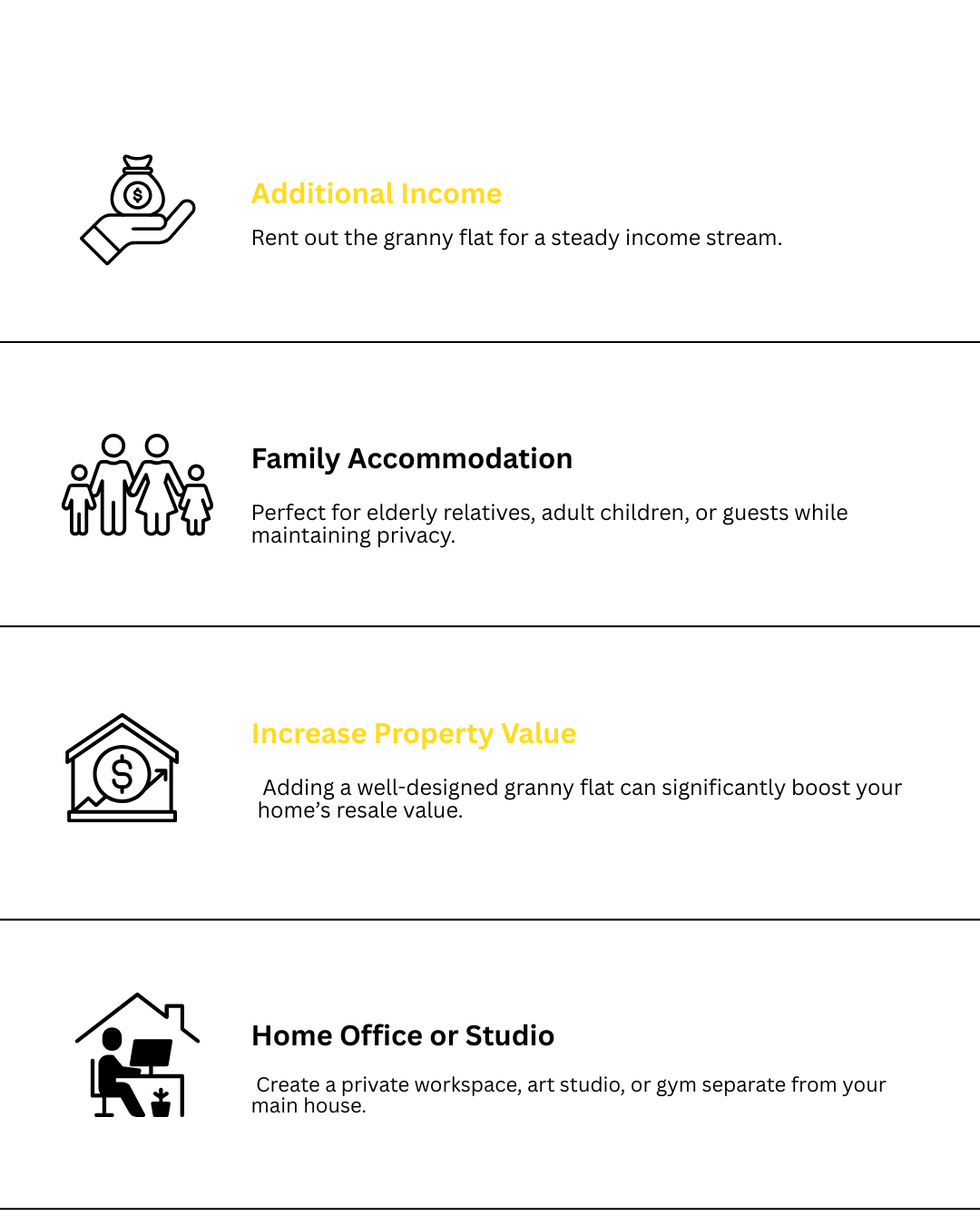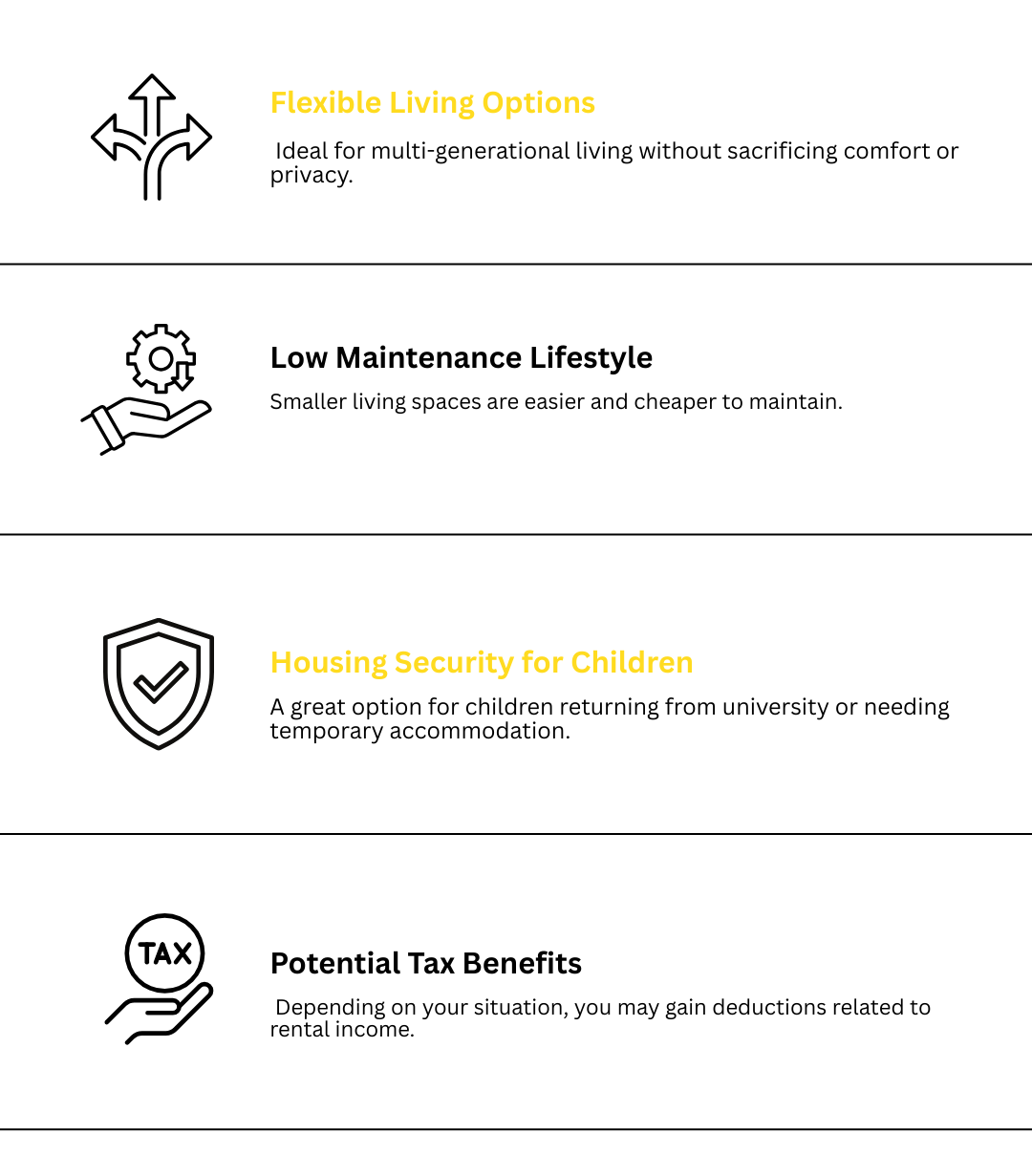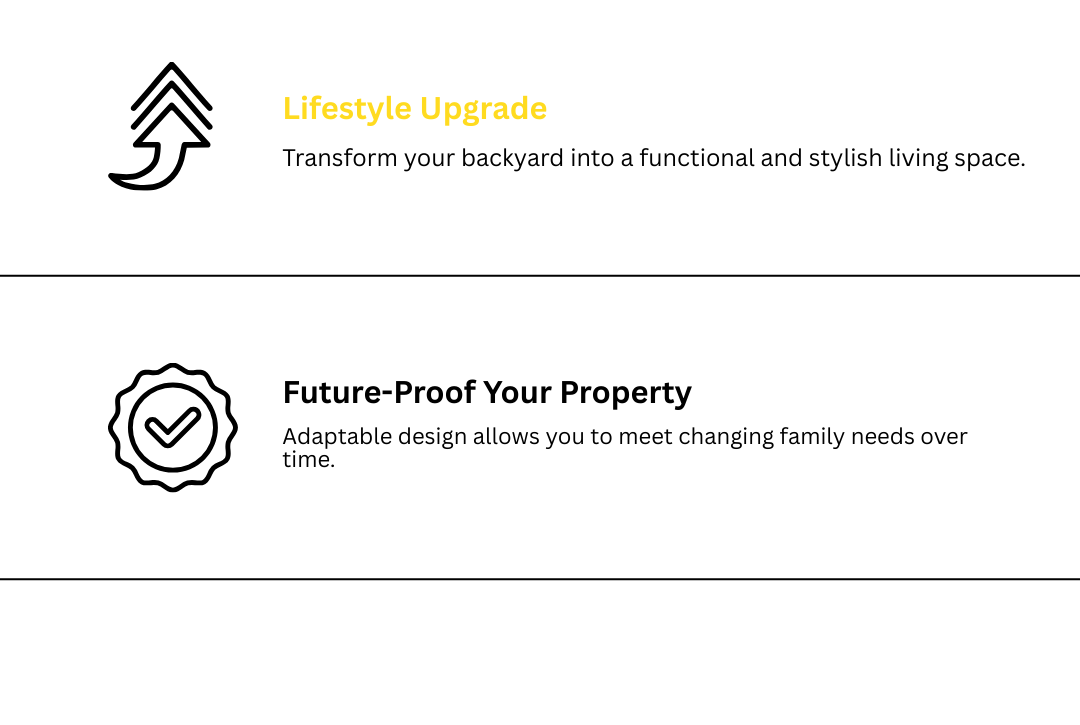Contact us from more information.
Frequently asked questions about granny flats:
What exactly is a granny flat?
A granny flat is a small, self-contained dwelling built on the same block as your main house. It typically includes a bedroom, bathroom, kitchen, and living area.
How big can a granny flat be?
In Western Australia, most local councils allow granny flats up to 70–80m² in size, but this can vary depending on your lot size and council rules.
Can I build a granny flat on my property?
Generally, if your property meets minimum lot size and zoning requirements, you can. Your local council will confirm whether your block is suitable.
Do I need council approval to build a granny flat?
Yes. Most granny flats require development approval and a building permit. Some councils offer fast-track approvals for compliant designs.
How long does it take to build a granny flat?
Construction usually takes 3–6 months, depending on the design, materials, and whether you choose a custom or modular build.
How much does it cost to build a granny flat in Perth/WA?
Costs typically range from $120,000 to $200,000+, depending on size, finishes, and whether it’s custom-built or prefabricated.
Can I live in a granny flat while it’s being built?
No, the granny flat must be completed and inspected before it can be occupied.
Can I rent out my granny flat?
Yes, you can rent it out to family, tenants, or via short-term rentals like Airbnb. Check council zoning and strata rules if applicable.
Can a granny flat have more than one bedroom?
Most councils limit granny flats to one or two bedrooms, depending on the block size.
Can I design a custom granny flat or use a standard plan?
Yes. You can choose a custom design to match your home or select a pre-designed modular plan for a faster build.
Can I include a kitchen and bathroom?
Yes, granny flats are self-contained dwellings, so a kitchen and bathroom are standard features.
Can the granny flat match the style of my main house?
Absolutely. Matching rooflines, materials, and colours can make the granny flat blend seamlessly with your home.
Can I build a two-story granny flat?
Two-story granny flats are possible but often require stricter council approvals and may be restricted by lot size.
What are the minimum land requirements for a granny flat?
Most WA councils require a block of at least 450–500m², but rules vary depending on zoning and setbacks.
How close can a granny flat be to my boundary?
Setbacks usually range from 1–2 metres from the side or rear boundary, depending on council requirements.
Can I build a granny flat on a small block?
Yes, but you may be limited in size, setbacks, and outdoor space. Some councils allow granny flats on blocks as small as 300–350m² with special approval.
Can I have a granny flat if I already have a shed or garage?
Yes, but the total site coverage may be restricted by council rules. You may need to adjust the design or relocate structures.
What materials are commonly used for granny flats?
Brick, timber, and steel frames are common. Modular prefab units are also popular for faster construction.
Can I build a granny flat with sustainable or eco-friendly materials?
Yes. Many builders offer energy-efficient designs, solar panels, and water-saving features.
Can I use modular or prefabricated granny flats?
Yes. Prefab units are quicker to install, often cheaper, and still compliant with WA building codes.
What type of foundation does a granny flat require?
Concrete slab foundations are most common, but piers or raised timber options may be used on sloped blocks.
What building codes apply to granny flats in WA?
Granny flats must comply with the Building Code of Australia (BCA), WA building regulations, and local council planning schemes.
Do I need a building permit?
Yes, a building permit is mandatory before construction starts. Your builder usually arranges this.
Are there restrictions on rental income from granny flats?
Rental income is generally allowed, but short-term rentals may be restricted in some council zones or strata schemes.
What happens if my property is heritage-listed or in a special zone?
Special approvals may be required, and designs may be restricted to preserve the heritage or environmental features.
Can I install solar panels on a granny flat?
Yes, solar panels can be added, but council approval may be needed if visible from the street.
Can I connect a granny flat to my existing utilities?
Yes. Most granny flats share water, electricity, and sewage connections with the main house, though separate metering is possible.
Can I get a loan to build a granny flat?
Yes, banks offer construction loans, equity loans, or refinancing options. A builder’s quote and council approval are usually required.
Are there grants or incentives for building a granny flat?
Currently, WA offers limited grants, but you may access incentives through energy-efficient building programs or first-home schemes.
What ongoing costs should I expect (insurance, maintenance)?
Granny flats require standard maintenance and insurance. Utilities, property insurance, and council rates may increase slightly.
Can I use a granny flat for family, guests, or Airbnb?
Yes. Granny flats are ideal for elderly family members, adult children, or rental income through platforms like Airbnb.
Can I add a granny flat later after building my house?
Yes. Many homeowners add granny flats after the main house is complete, provided the block size and council rules allow it.
Can I sell my property with a granny flat?
Yes. A granny flat can increase property value and attract buyers seeking extra living space or rental income.
